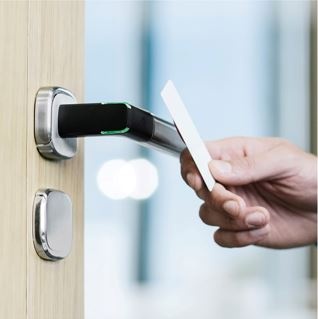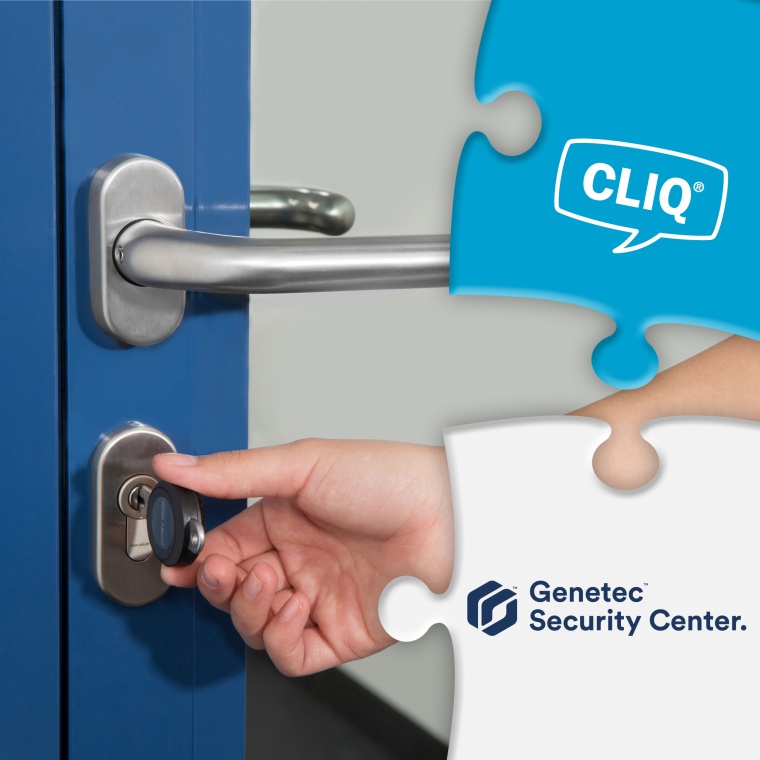Russell Wagstaff on Slow Spread of Building System Integration
Interview with the Plat-form Director at Assa Abloy on the Long Availability but Slow Spread of Building System Integration



GIT SECURITY: Mr. Wagstaff, integration of different systems in buildings is one of the most discussed issues in the entire security industry and beyond. Buildings are becoming smart, which is not only a question of convenience but also of security, process and cost-efficiency, and also sustainability. This is all quite complex – so let us start by specifying the subject of our interview: what does ‘integration’ imply from an access solution provider’s point of view?
Russell Wagstaff: The essence of ‘integration’ is about being joined up. Joined-up systems and technologies enable an organization to handle multiple processes together — to save time and money, reduce errors, operate more efficiently and so on. The value of integration is quite simple — and access control’s role is central. If a building ‘knows’ who is coming and going, where they are, how many are in specific areas at certain times, then systems such as lighting, HVAC and video can react accordingly. The system integration is where it all begins.
You have recently found out in a survey that companies regard integration as particularly important for their respective business. On the other hand, many companies have not really implemented unified building management systems.
So pushing the integration topic in the market is apparently an important part of Assa Abloy’s overall strategic approach?
Russell Wagstaff: Indeed. In an EMEIA-wide survey of security professionals and end-users conducted for our Wireless Access Control Report 2021, over 90% of respondents identified the importance of integration across building functions. Half or more said they would prioritize electronic access system integration with CCTV, alarm and visitor management systems. Yet for many, deeper integration of building systems remains an unfulfilled wish. The report survey investigated what was holding them back. For most it is cost (59%) or a lack of technologies developed to open standards (27%). For over a quarter of respondents (26%) however, one roadblock they identified was a lack of knowledge – highlighting a need for better market education.
This is an area where we have deep expertise to share. We have been doing integration for a very long time: our Aperio wireless locks, designed to expand almost any access system, have been available for over a decade. The range is still widening and the technology improving, adapting to new user requirements such as mobile keys. Looking to the future, our new Incedo platform is an entire access control ecosystem built for integration, with devices from our own range supplemented by compatible solutions like CCTV.
The technical backbone of integration is provided by connected ecosystems, data capture and analysis for ‘intelligent’ buildings. Can access control integration be done via hardware or software?
Russell Wagstaff: Both! Integration is not a one-size-fits-all process. In fact, by partnering with an experienced integrator and access control provider, an integration should be designed to achieve whatever goals or efficiencies the customer is targeting. It can incorporate hardware or software integration — or both.
For hardware integration, it is critical that hardware be designed for interoperability, built to agreed, compatible standards, with an integration-ready API. As well as being more flexible, solutions developed to common standards are better future-proofed. Standards ensure investments can be made today with the confidence that hardware and firmware can be built on in the future, whether in expanding to new premises, developing a ‘smart building’ or whatever.
Security software offers another powerful integration path. Our CLIQ key-based access system with a wide range of locking cylinders, for example, can be integrated via the Web Manager into other security or building management solutions. A CLIQ software integration with Genetec´s Security Center is already launched. This helps Security Center users to broaden their access control capability, administer locking more efficiently and better protect all kinds of premises from increasingly sophisticated and diverse threats.
Company partnerships are crucial for making integration happen. One of the most recent and probably most important co-operations you have set to work is one with Siemens: Assa Abloy’s Aperio battery-powered access control has been integrated into Siemens’ Siveillance Access from their Smart Infrastructure Suite …
Russell Wagstaff: That is correct. Our integration collaboration with Siemens supports a growing number of devices from the Aperio range, including the escutcheon (E100), cylinder (C100) and, in the near future, the cabinet lock (KL100). Each integrates seamlessly with Siemens SiPass, giving security teams control over almost any interior or exterior door – including wooden and glass doors as well as fire doors – from a single, familiar interface.
Our battery-powered Aperio locks make it simpler and more cost-effective to extend access control further into a building. This increases the overall security of the premises. Movement around the site can be monitored and measured to extract insights about building use, while reducing breaches and thefts. Managing access deeper into a building – far beyond the perimeter or entrance door – provides an opportunity to harness this valuable business data. It also enables more flexible use of space: access may be varied depending on the time of day or week, for example, making ‘touchless office’ policies easier to implement. In the case of one-off events, open access can be extended widely then quickly returned to secure status.
An integrated system is already deployed at Hamburg’s HafenCity University (HCU), where Aperio wireless locks extend Siemens’ intelligent access control. Around 500 Aperio cylinders are connected to and controlled by the university’s Siemens system.
You point out that the integration of wireless locks into a security management platform is particularly cost-efficient and future proof? Could you expand on that a little – and in what other ways does integration play a role in the pursuit of cost efficiency?
Russell Wagstaff: So many efficiency gains flow from operating a single, integrated management system rather than multiple systems in parallel silos. For example, the need to administer and update separate systems may create double or triple the work. Duplicating data entry also increases the chance for errors. The job gets done quicker because the system is always familiar. Staff induction and training are more straightforward.
To quote one independent Omdia analyst, “Access control integration is essential to unlocking the potential of higher-level BMS platform functionality. As more BMS solutions move towards command-and-control-style features, which allow buildings to adjust building management subsystems to respond to individual occupants’ actions, the need for access-control integration grows exponentially”*.
Integration also helps building users to work smarter. One credential, on a smartcard or phone, might open the car park barrier, then the building entrance and their department door. It may then unlock their laptop, let them book a meeting room and buy lunch in the café. It’s so much quicker and more efficient with an integrated system.
When talking about buildings today we have to concede that the Corona crisis has reinforced a trend towards a certain loss of importance of offices. A significant number of both employees and companies seem to believe that working from home should survive corona – and there is also the concept of hybrid working. Is this also something that can be managed better by integrating building technology components?
Russell Wagstaff: The continued growth in home, mobile and ‘hybrid’ working certainly requires building security to be more flexible. The right access control technologies and devices can make tracing movement and contacts much easier, for example. The data generated by an integrated access system can help businesses manage space usage more efficiently in this ‘new normal’ we are entering.
When an organization replaces mechanical locks with integrated wireless door devices, there is less need for keys to be shared or passed around. A few clicks in the system gives employees permission to enter on some days but not others, for example. Connect a user credential with the photocopying or library borrowing system and you add greater flexibility to allow people to work when they need to, not necessarily when everyone else does.
Remote management of an integrated system frees security managers from their desk. They too can work smarter, and from anywhere. The integrated system can detect entry then coordinate with automated heating and lighting or alarm systems to perform an appropriate function in response.
The integration of different solutions, products and technologies is quite demanding for manufacturers, integrators and customers alike. What does this mean in terms of training for Assa Abloy and its customers?
Russell Wagstaff: It is important to mention that one goal of integration is to help customers reduce the need to constantly train staff on new systems, new interfaces, new ways of generating and managing data. This is very different to the ‘old way’ of running building functions in silos. Not only did these systems refuse to ‘talk to’ each other, they also required staff to be trained in each one separately. Controlling as much as possible from a single, integrated interface is much more efficient.
Mr. Wagstaff, we’re already approaching 2022. How will the story of integration continue at Assa Abloy and its partners?
Russell Wagstaff: Although we have been making and selling integration-ready access control for over a decade now, we still feel this is only the beginning. There is vast potential for integration to help buildings and building management to be more efficient.
Let me finish with a brief example. The UN Environment Program estimates that buildings consume around 60% of the world’s electricity. We can do better! By providing the ‘grammar’ that allows building systems to communicate and interoperate – to be smarter – integration is a small but important part of the solution.
Assa Abloy’s Wireless Access Control Report 2021 is free to download at: https://campaigns.assaabloyopeningsolutions.eu/wacreport2021
most read


When the Internet stumbles: Why DNS is important
When DNS fails, the internet stumbles-AWS outage proves resilience and redundancy are vital for digital trust

Security management, building security & perimeter protection: the winners of category E at the GIT SECURITY AWARD 2026
GIT SECURITY AWARD 2026: Security management, building security & perimeter protection - an overview of the most innovative solutions

VIP-Lounge Interview: Marco Mille, Global Head of Security, Siemens AG
VIP in the World of Security: Marco Mille, Global Head of Security at Siemens AG

Is Your Venue Ready for Martyn’s Law?
Martyn’s Law demands stronger security by 2027. Is your venue prepared to protect and respond?








